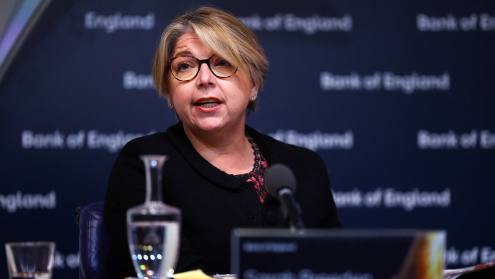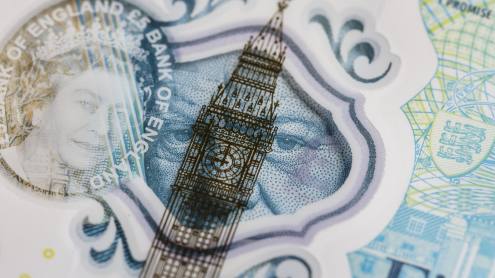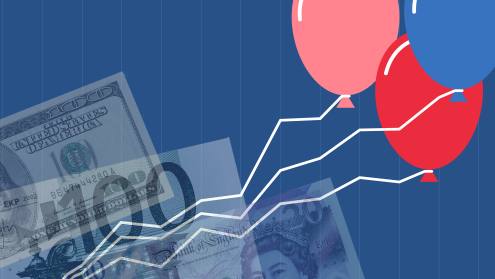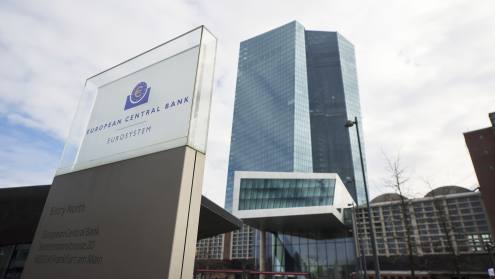The collapse of Iceland’s banking system and economy in 2008 is not something you easily forget.
But recently, it has stood out for different reasons. While growth in other Western economies has slowed, gross domestic product (GDP) growth in Iceland for the first nine months of 2022 was around 7% — its strongest since 2007.
For a country that has endured its fair share of economic hardship, you would think that would be cause for celebration. But for Ásgeir Jónsson, governor at Iceland’s central bank, there is still reason to be cautious. He spoke to The Banker about measures the bank has put in place to control borrowing, and why he is concerned about rising spending among Icelanders.
Q: How has the central bank exercised its new financial stability powers following its merger with Iceland’s Financial Supervisory Authority in 2019?
A: We have taken the lead in using financial stability measures to prevent the economy from becoming leveraged again. Moreover, we have used macroprudential measures to reinforce monetary policy. In a small open economy like ours, you always have to carefully monitor credit creation. The banks always have the ability to print money by simultaneously lending and taking deposits.
In small currency areas, these booms very quickly deteriorate the balance of payments and strain the currency market. Therefore, we have adopted policies to prevent leverage, or the debt-fuelled enlargement of balance sheets of both banks and households. This is achieved by maintaining high capital buffers on the banks and enforcing borrower-based measures on households; capping both leverage ratios and debt service burden. So far, we have been successful. Both corporate and household debt have been stable as a ratio of GDP.
Q: Why are you controlling lending and borrowing to this extent?
A: Iceland is different from many European countries. We are much less affected by the energy crisis. About 90% of Icelandic households use geothermal energy to heat their homes. The rest use hydro-generated electricity. The turn of events abroad has created positive terms of trade shock for our economy. Most of the things we export — fish, aluminium, tourism — have risen in price. This is very positive.
We had 7% GDP growth for the first three quarters, but at the same time domestic spending is rising too, to the level that we now worry about a widening trade deficit. After all, practically all capital goods needed for investment have to be imported. It’s not wise going into 2023 with a current account deficit, given that many of our trading partners in Europe could be heading into a recession, which will affect us.
We had 7% GDP growth for the first three quarters [of 2022], but we now worry about a widening trade deficit
We have to be quite conscious about our external position. That’s one of the reasons why Iceland is so obsessed with being unleveraged, liquid and able to withstand any turbulence.
Q: Has inflation peaked yet in Iceland?
A: We are hoping it peaked at 9.9% in September, which is psychologically important as we do not want it to get into double digits. But inflation has been stubborn. Housing prices have been a huge factor in consumer price inflation. However, a growing economy always translates into new job openings and we have a huge influx of people coming from central and eastern Europe. These new workers have to sleep somewhere and the influx of labour puts pressure on the housing market.
We’ve also raised interest rates to try and prevent people from taking out loans. But it’s not having the effect on spending we had projected. After the financial crisis, savings rates in the country increased significantly for many reasons. But now I’m worried about savings rates going down.
People now feel that they are quite justified in spending their savings on things like holidays in Tenerife since finally the travel restrictions have been abolished. This trend has been manifested on Facebook, by people posting photos of their toes with a beach or a pool in the background. I used this as an example of how the nation was overspending and creating a trade deficit, which might lead to a higher policy rate.
Some people became very offended. Why should the central bank want to punish them for just enjoying life? People even organised campaigns to personally send me pictures of their “Toes on Tene”. Nevertheless, I was able to get the point across to practically everyone on why we have to use preventive policy measures against overheating.
Q: When is the central bank’s current rate hiking cycle likely to end?
A: At our last meeting in November, we raised the policy rate to 6%. I was hoping that was sufficient, but we’ll have to wait and see. Our next monetary policy meeting is in February, so we’ll need to look at the situation then and see if we need to do more.













